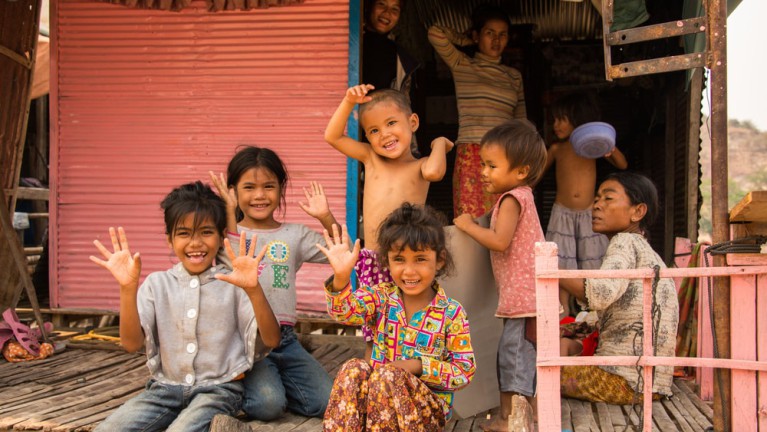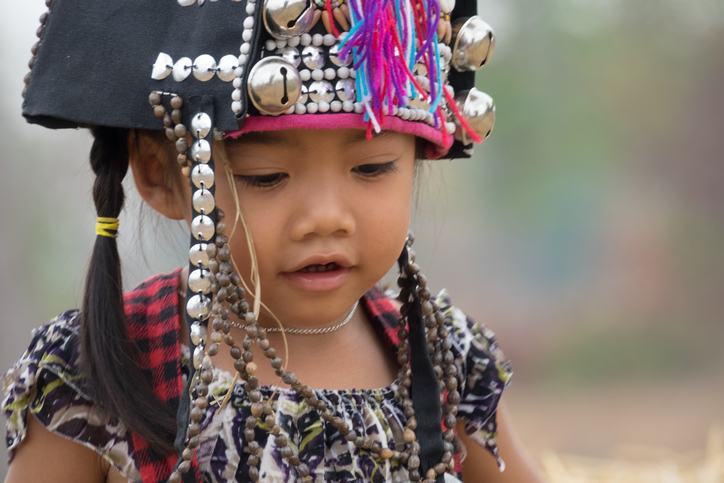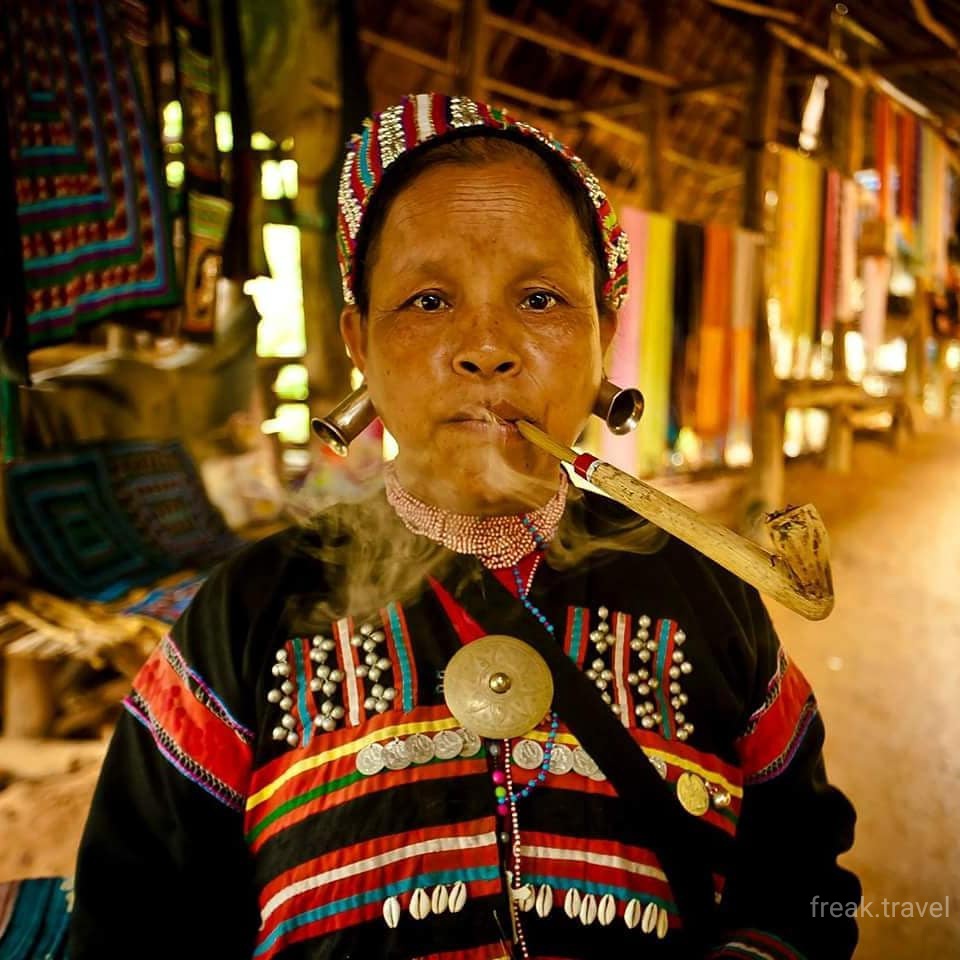Itinerary
Transfer and accommodation at the hotel in Luang Prabang
Located at the confluence of the Mekong and Khan rivers, Luang Prabang is undoubtedly the most beautiful city in the country. According to UNESCO, the city has the best preserved set of traditional and colonial architecture in Asia.
Accommodation at a hotel in Luang Prabang.
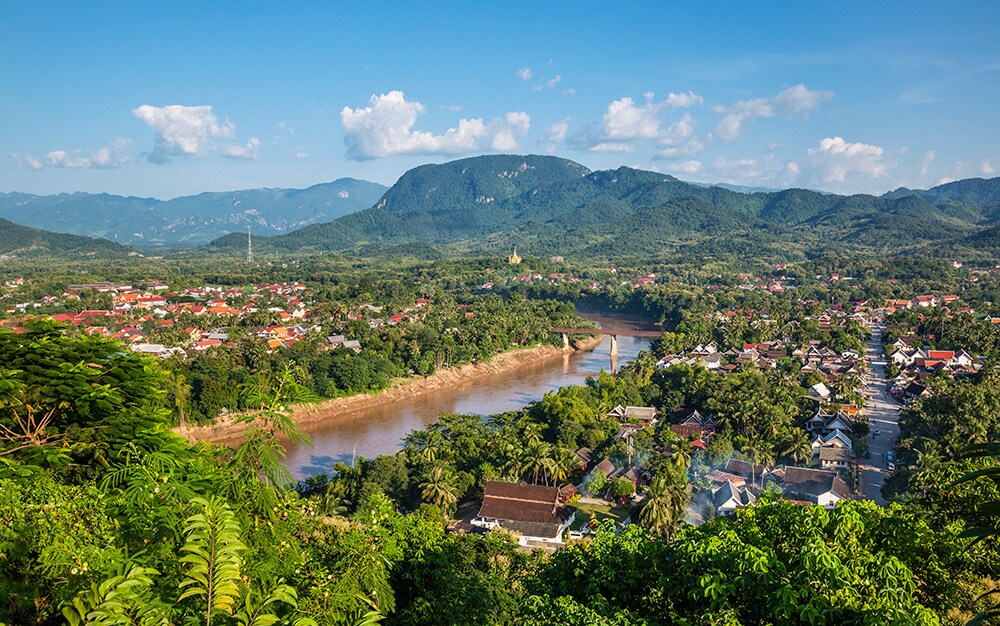
After breakfast we will go on a sightseeing tour of the city. Today's program includes the National Museum in the former Royal Palace (closed Tuesday and Sunday afternoons), which contains a collection of valuable artifacts, and Wat Wisun, called the “Watermelon Pagoda” because of its shape You'll also explore the majestic Wat Xieng Thong monastery, whose roofs curve almost to the ground. This monastery is the epitome of the classical style of temple architecture in Luang Prabang.
In the afternoon we will visit the weaving villages of Ban Xangkong and Ban Xienglek, where we will learn in detail the process of making silk, as well as the Center for Ethnology and Traditional Arts to learn more about the culture of Laos. And at the end of the day, a night climb to Phu Si hill, from where a magnificent panorama of the city and its surroundings opens up. After all this we will have dinner on the boat during a circle along the night Mekong.
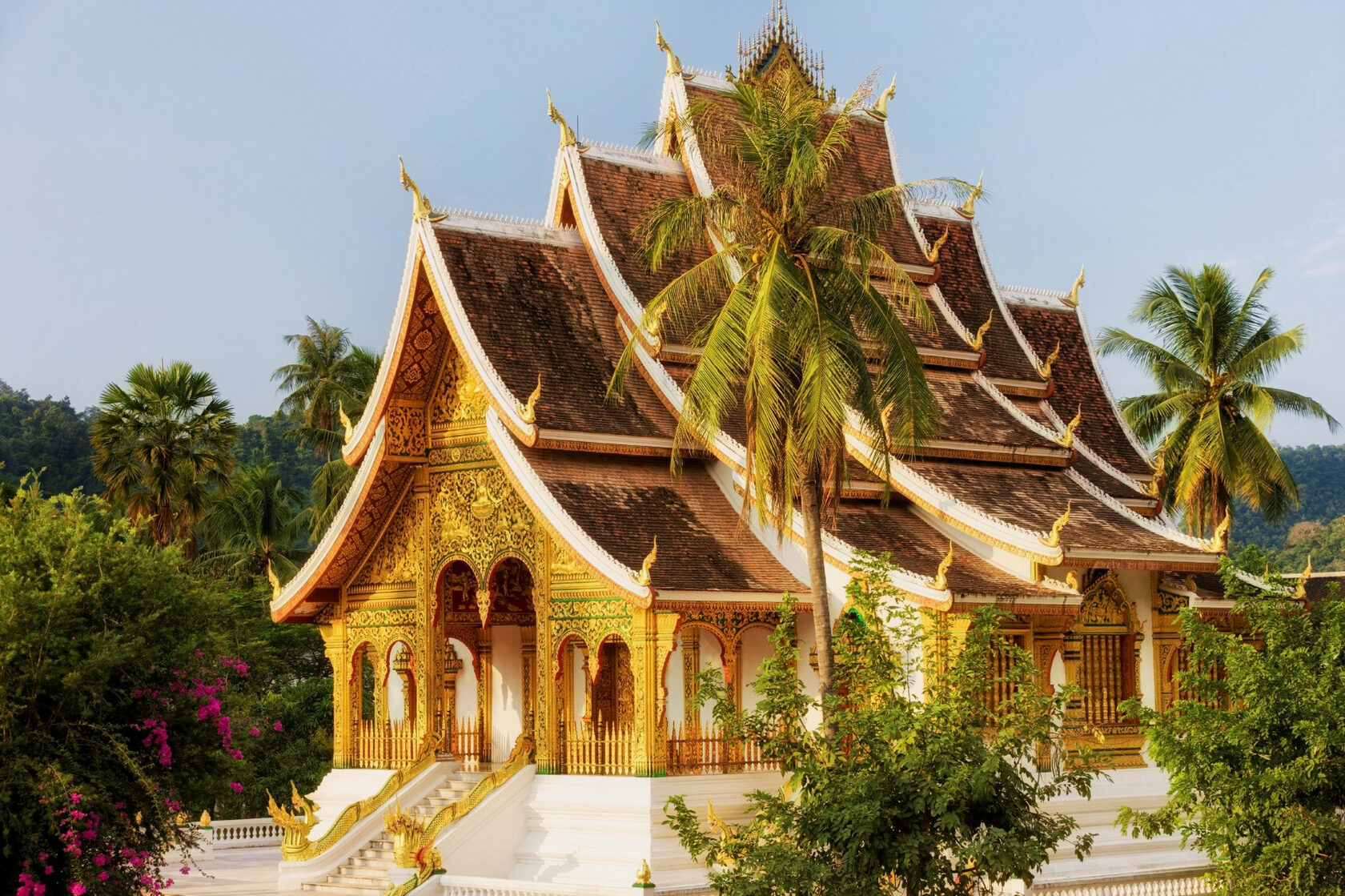
We recommend getting up at dawn on this day, as this is when the town hosts the daily morning ritual of offerings by local residents to Buddhist monks dressed in bright saffron robes. This spectacle is truly unique, as Laos remains the only Buddhist state that still preserves this tradition. After familiarizing ourselves with the sacred ritual, on the way back to the hotel we will also stop at the local market, very lively in the morning.
After returning to the hotel and having breakfast, we will start the route again. This time, explore the surroundings of Luang Prabang. On a short cruise down the Mekong, overlooking fields and serene villages, we arrive at the mysterious caves called Pak U. It is filled with thousands of gold-lacquered Buddha statues of all shapes and sizes, left by pilgrims.
The second stop and the end of the trip will be the legendary Kuang Si waterfall. Here, among flowers and tropical aromas, we will stay longer, relieving fatigue with a swim in a picturesque waterfall and a quiet walk through the forest paths. Here we will visit the center to save the moon bears, the inhabitants of these places: the Tat Kuang Si Bear Rescue Center.
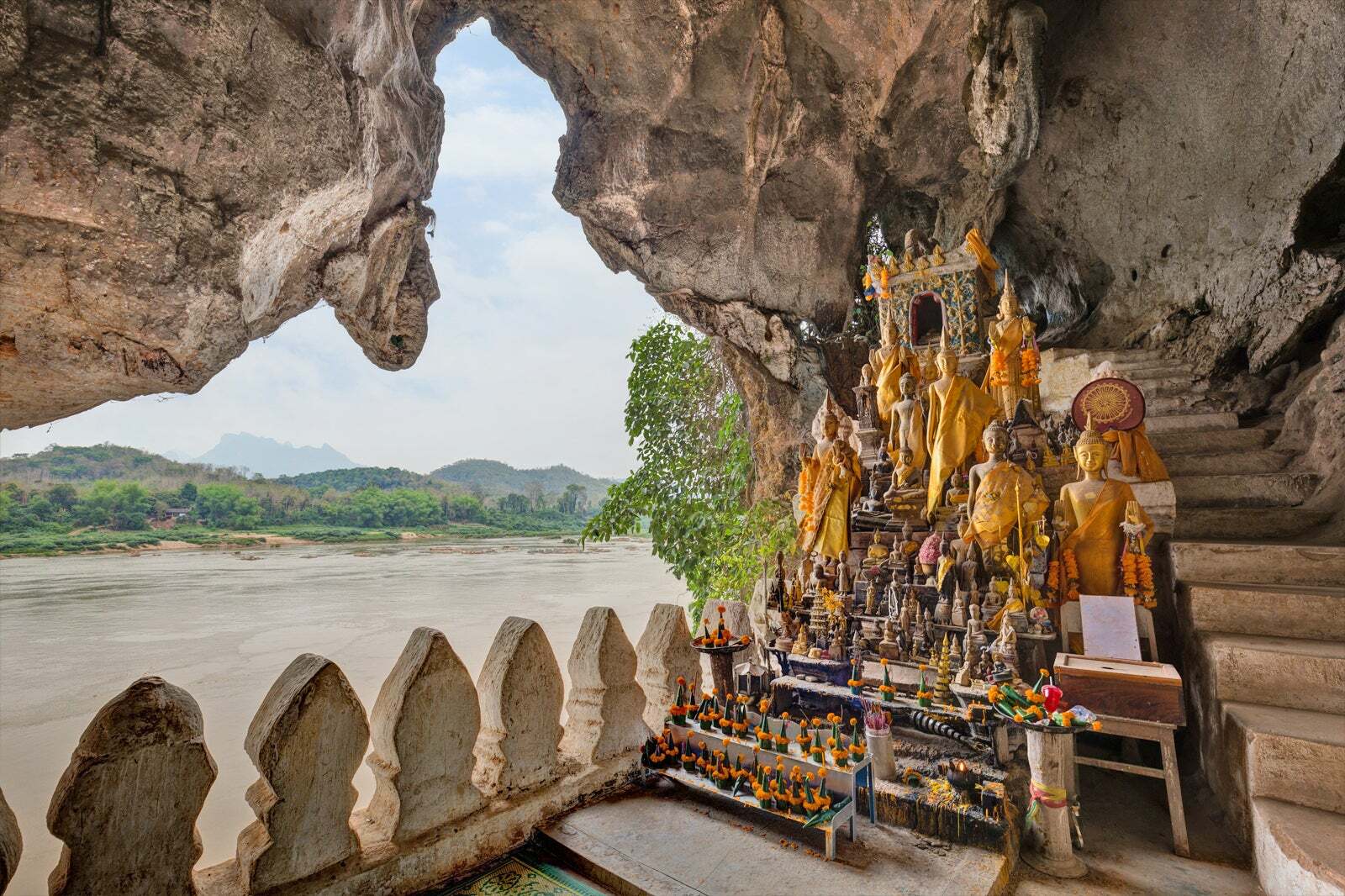
Travel from Luang Prabang to Vang Vieng by high-speed train: 2 hours, 183 km.
On the second day after arriving in Vang Vieng we will visit the picturesque Tam Giang Cave, which offers impressive views of the Nam Son River and karst landscapes. We will then board a local tractor and race through the rice fields to Tham Phukam Caves, enjoying the local sights and greeting residents of the nearby villages along the way. Here, surrounded by virgin forests, there is not only the most famous limestone cave in the region, but also a very picturesque lagoon, right at the foot of one of the deepest caves. Of course, we'll cool off in its blue waters, bungee jumping until we're tired.
After a picnic in nature, if you wish, we can challenge our abilities and raft in inflatable tubes along the Piedmont River (extra charge). We will walk half way; this is enough to feel the adrenaline and courage, see the beauty of the arches of the caves, the stalagmites and cool off from a hot day in the cool waters of the Piedmont River. The end of the adventure day in Vang Vieng will be tubing down the Nam Sok River (extra charge). You have already learned how to control the camera, it is much easier to do it along the river. Carry your phone in a waterproof bag and take pictures of the limestone mountains and each one right on the river.
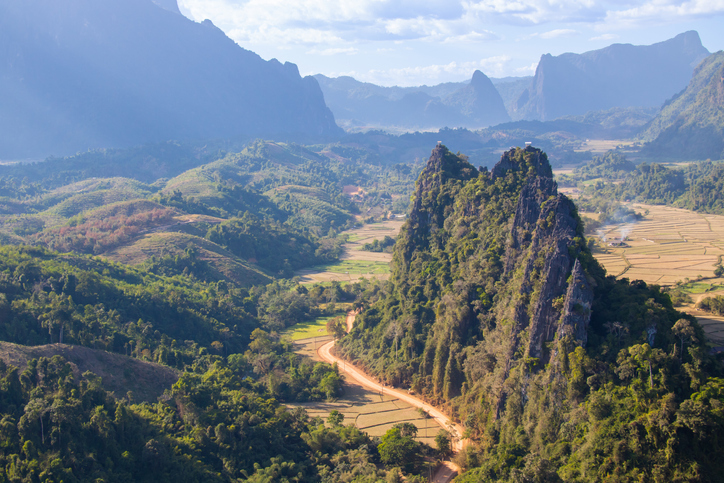
Travel from Luang Prabang to Vang Vieng by high-speed train: 2 hours, 183 km.
On the second day after arriving in Vang Vieng we will visit the picturesque Tam Giang Cave, which offers impressive views of the Nam Son River and karst landscapes. We will then board a local tractor and race through the rice fields to Tham Phukam Caves, enjoying the local sights and greeting residents of the nearby villages along the way. Here, surrounded by virgin forests, there is not only the most famous limestone cave in the region, but also a very picturesque lagoon, right at the foot of one of the deepest caves. Of course, we'll cool off in its blue waters, bungee jumping until we're tired.
After a picnic in nature, if you wish, we can challenge our abilities and raft in inflatable tubes along the Piedmont River (extra charge). We will walk half way; this is enough to feel the adrenaline and courage, see the beauty of the arches of the caves, the stalagmites and cool off from a hot day in the cool waters of the Piedmont River. The end of the adventure day in Vang Vieng will be tubing down the Nam Sok River (extra charge). You have already learned how to control the camera, it is much easier to do it along the river. Carry your phone in a waterproof bag and take pictures of the limestone mountains and each one right on the river.
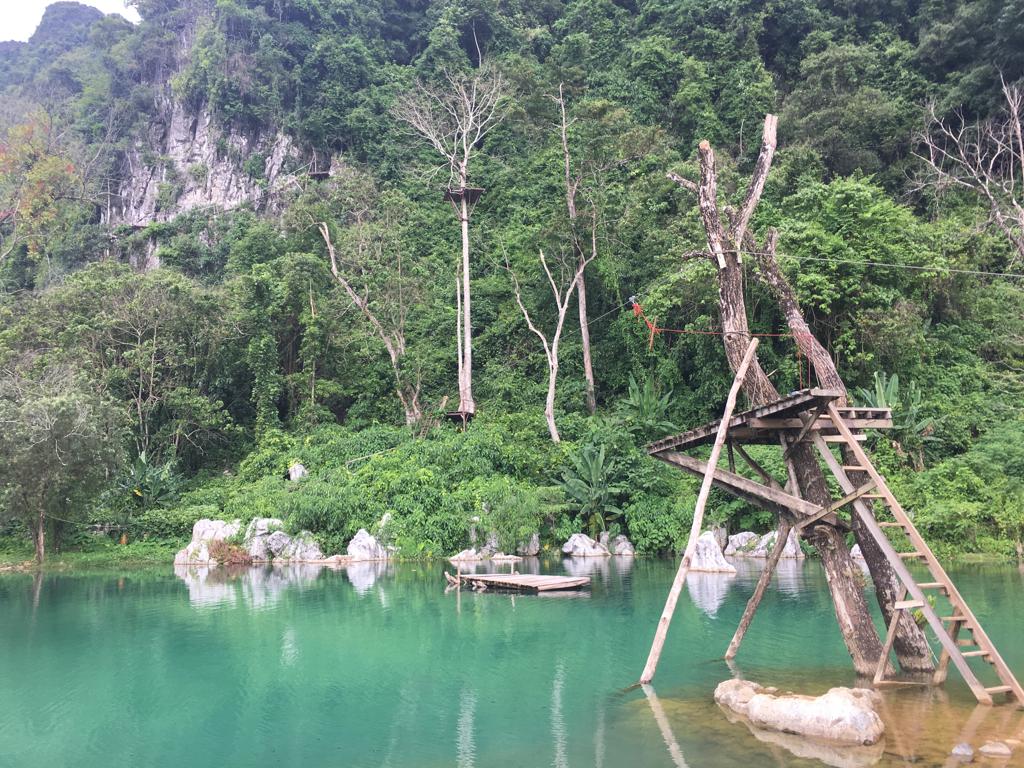
Travel from Vang Vieng to Vientiane: 4 hours, 157 km.
In the morning, after saying goodbye to beautiful Vang Vieng, we will head to the capital of Laos with a stop on the way, in the small village of Tha Heua, which specializes in dried fish. We will see with our own eyes the bundles of dried fish hanging in front of the houses.
Upon arrival in Vientiane, check into a hotel and rest before walking around the city. Today we will visit the oldest temple in the city: Wat Sisaket, which houses thousands of miniature Buddha statues, the ancient royal temple of Wat Prakao, which previously housed the famous Emerald Buddha statue, as well as the ancient stupa of That Luang. . We will also be able to photograph the imposing Patuxai Monument, known as the Triumphal Arch of Vientiane, and visit the unusual but impressive Buddha Park, a charming collection of Buddhist and Hindu sculptures in a meadow on the Mekong River. They were created by a mysterious monk, revealing his philosophy of life and ideas about the Universe.
Accommodation in a hotel in Vientiane.
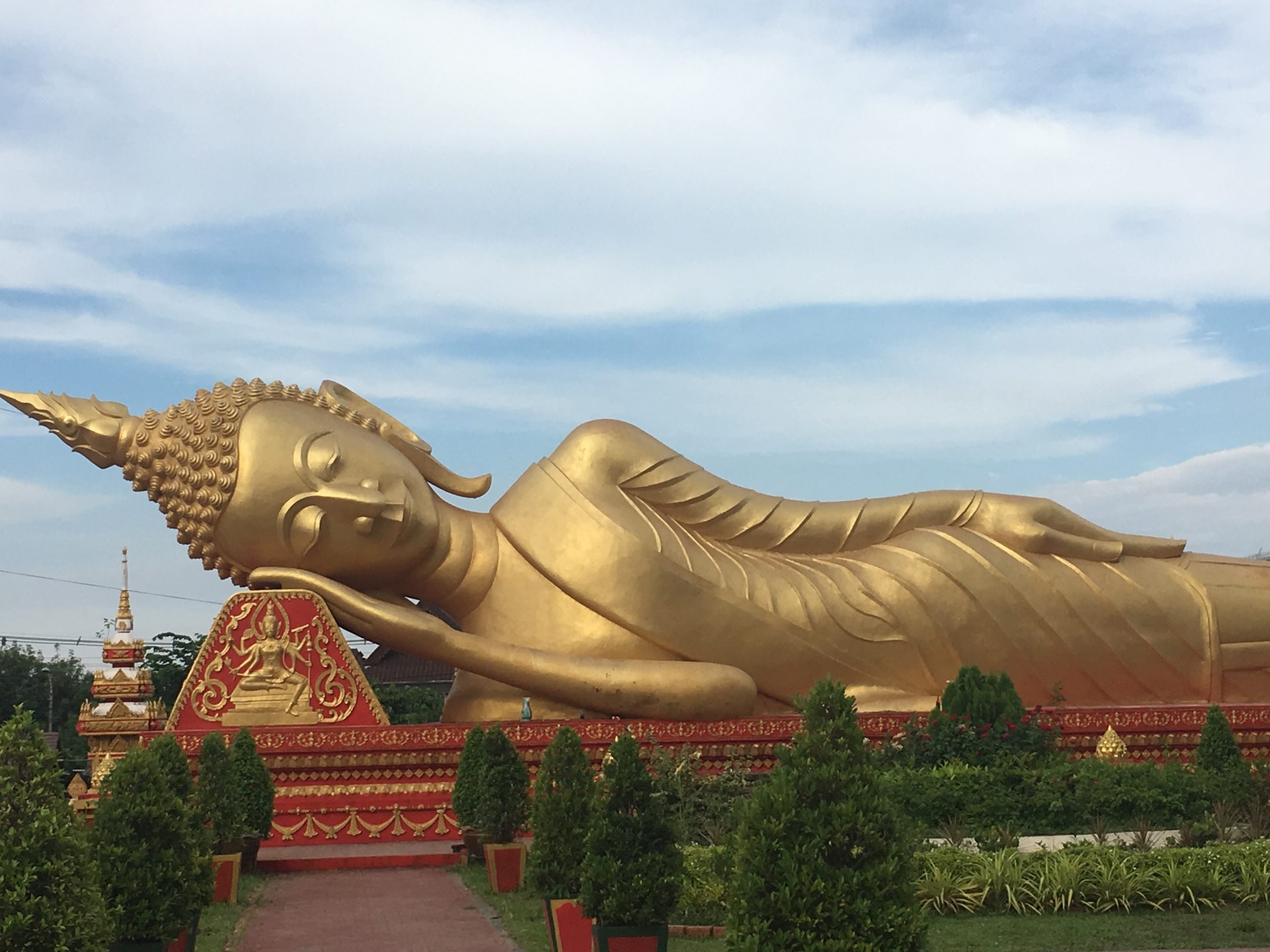
Flight: Vientiane – Pakse (Lao Airlines, QW 305 08:00-08:50); transfer from Pakse to Tad Lo village.
After covering a long distance by plane between the capital and Pakse, we will arrive in the province of Champosak. Straight from the airport, we will go to the Bolaven mountain plateau. This place is known for the coldest temperatures in the country, primarily due to its high altitude location above the Mekong Valley and its stunning variety of waterfalls.
Having settled in cosy bungalows, we will explore the plateau. Our first stop will be the village of Howei Teng, which specialises in knife-making. The residents of this village represent the ancient Kathu ethnic group. Don't be surprised when you see Kata smoked in a long, giant bamboo - everyone, from children to older people, smokes it.
Our next stops will be Tad Phan - a picturesque waterfall with two chutes, a coffee plantation on the way to the colourful food market of Ta Teng ethnic minorities and the fascinating village of the Alak minority Ban Bong Neua, who still use a sacrificial altar.
But that's not all. Ahead is the beautiful Tadlo Falls - here, we will have time to relax and cool off in its pools, right below the falls. If you wish, you can also admire the beautiful scenery during a short ride on an elephant before, enchanted by nature and the coolness of the plateau going to bed.
Overnight at a hotel in Tad Lo.
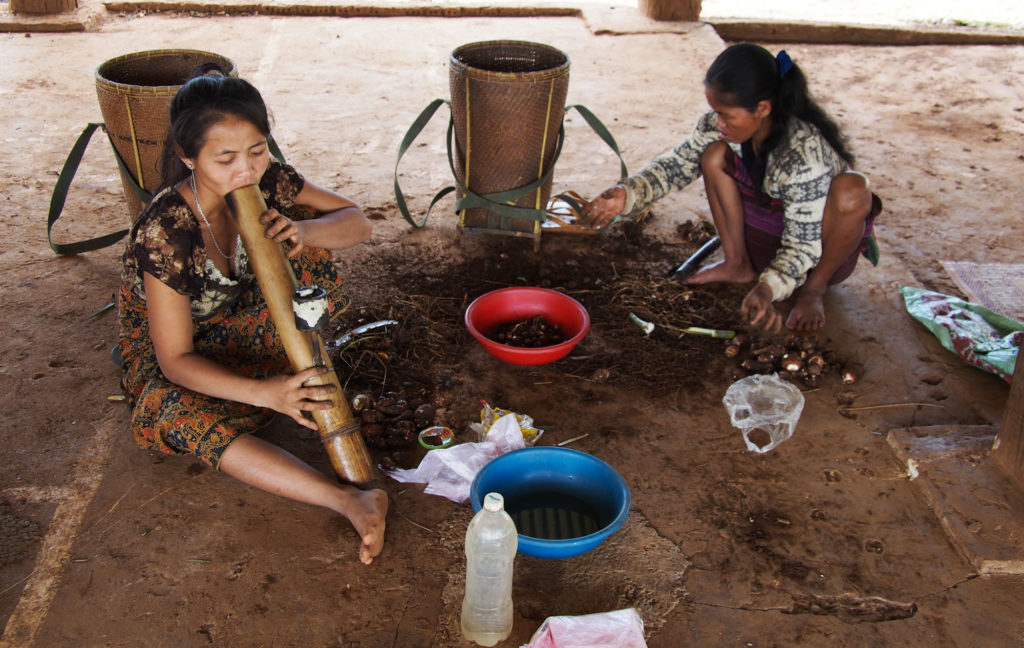
Transfer from Boloven Plateau to Wat Phu Temple to Don Khong Island: 4 hours (without visiting the temple), 229 km.
After breakfast and checking out from the hotel in Pakse, we go to the ancient Kingdom of Champa - Champassak, built in the 7th-11th centuries. Its central pearl is the Wat Phu temple, a centre of spirituality in the past and has been a world heritage site protected by UNESCO since 2002. Once upon a time, the Khmer kings owned these lands, the empire's laws were established here, and local power belonged to either the Khmer or Laotian aristocrats.
Next, in the afternoon, we will take a ferry and cross the Mekong to Don Khong, the region of 4000 islands, the widest point of the Mekong River during the rainy season. However, in the dry months, the river recedes, leaving behind thousands of large and small islands. This area of the river is also known as the habitat of the endangered Irrawaddy dolphin.
Check-in to a bungalow in the early evening. Free time for a walk around the island. Overnight at the hotel.
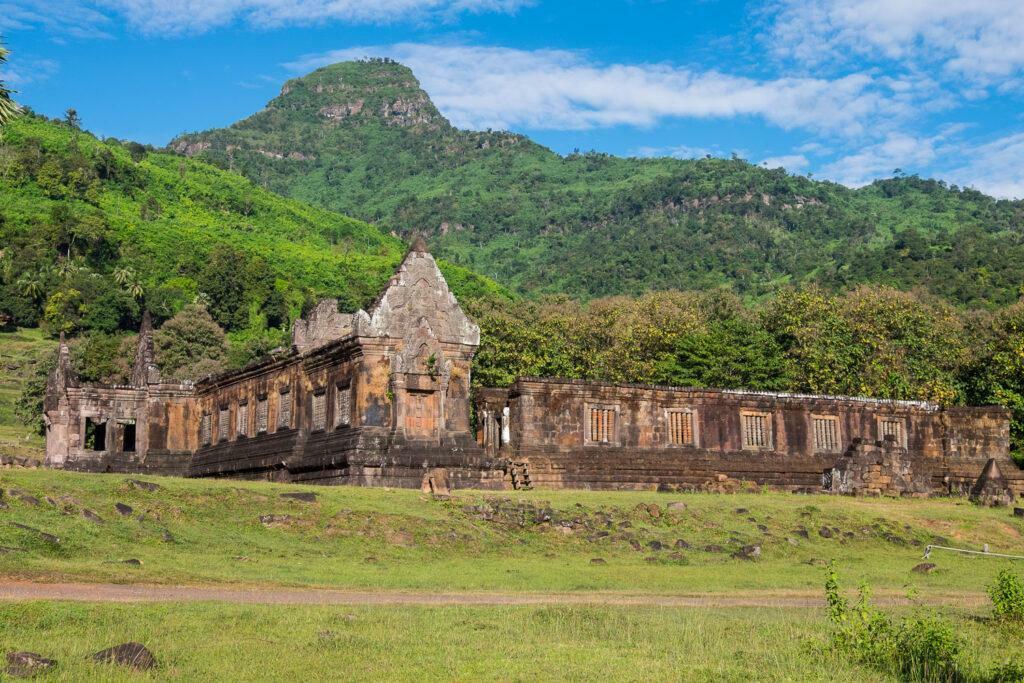
After breakfast at the hotel, we will take a boat trip to Don Khon Island, which we will explore by bicycle. Today, we will visit sights from the country's colonial past and witness the water riot at the Ly Phi Falls, also called the “Devil's Corridor”.
The day flies by, and now we are returning to the mainland. To go south - towards Cambodia. On the way, we will meet with Khon Phapheng, the largest waterfall in Southeast Asia in terms of volume. The opportunity to take a local boat is how we will see the rare freshwater dolphins living in this Mekong area.
Our cultural program continues with the routine border crossing and transfer to Siem Reap. Upon arrival in Siem Reap in the late evening, we will stay at the hotel, have free time, and stay overnight.
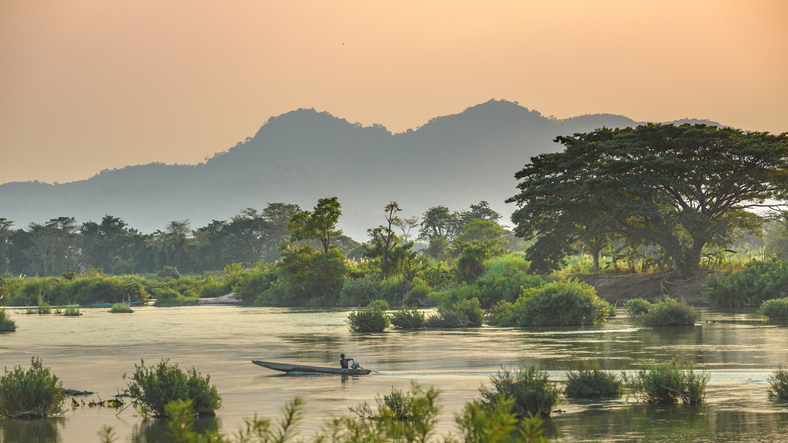
Today's journey to the once-lost jungle world of Angkor, the centre of the powerful and prosperous Khmer empire, begins at dawn at the most significant Hindu religious building in the world - the Angkor Wat temple. After which, we will go to the ancient capital of Angkor Thom with the central Bayon temple, famous for its stone smile towers, climb the stone mountain temple of Bapuon, walk through the territory of the former Royal Palace, and go to the medieval Buddhist monastery Ta Prohm, once swallowed up by giant ficus trees and silk trees.
After a busy walk around Angkor, lunch and a short rest at the hotel, we will go for dinner and a show in an atmosphere of a union of ancient traditions with modernity: dance performances, authentic music, many colourful dishes, photo souvenirs with the Apsara demi goddesses. Then, head to Pub Street and drink a mango margarita in a cosy cafe among colonial houses, listen to live music, and take a selfie as a souvenir of one of the most popular places on the planet.
Overnight at a hotel in Siem Reap.
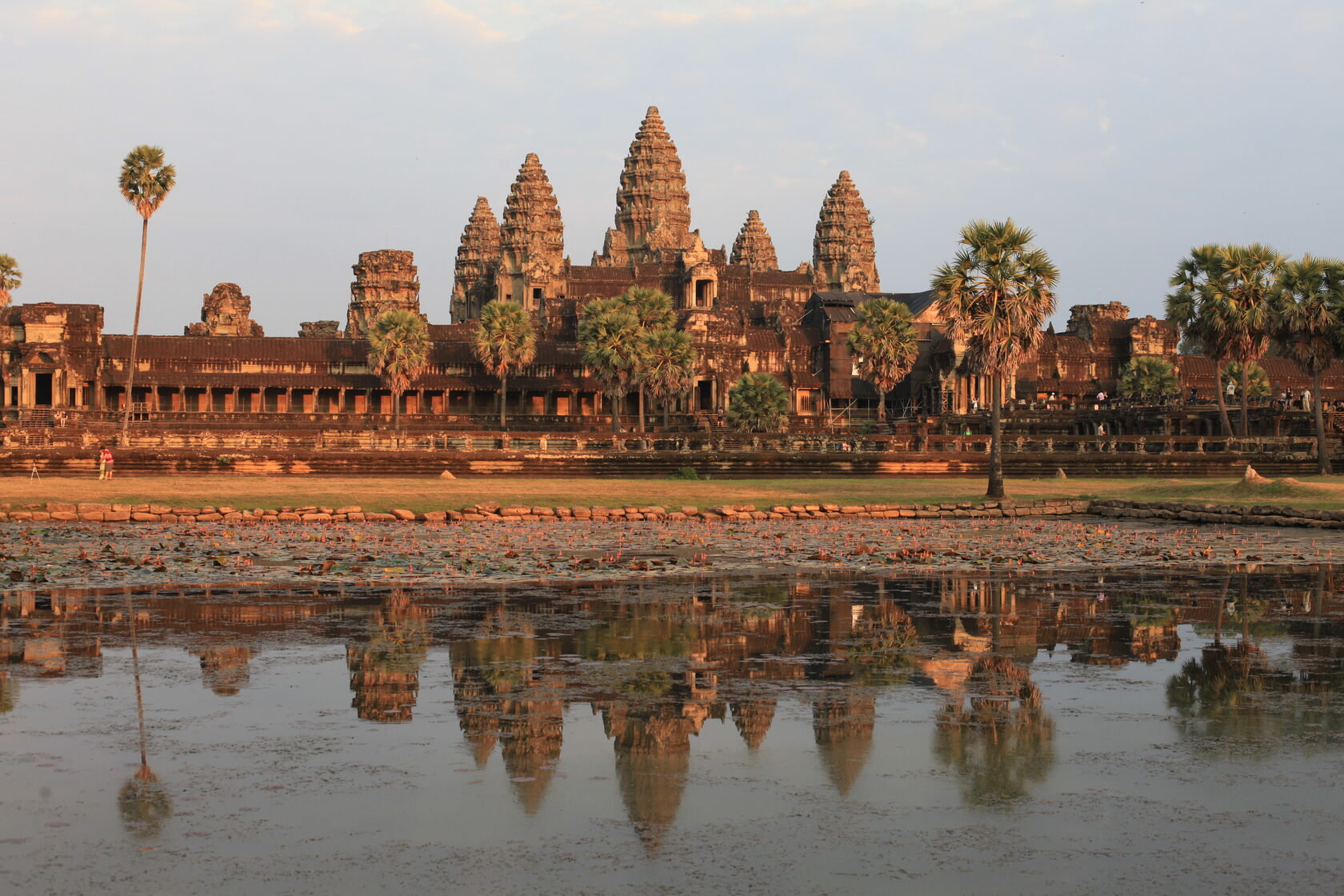
Today, we will begin by acquainting ourselves with the “miracle of grace and harmony” - the pink sandstone temple of Banteay Srei. This miniature pink sandstone masterpiece is the most unique example of the art of stone working in antiquity.
The next point on our route will be the small Kulen mountain range, considered sacred among the Khmers. According to legend, it was here that the divine Buddha took his last step. You will walk along the mountain river “Thousand Lingas”, the bottom of which is decorated with stone carvings for hundreds of meters. Then, you will climb to the peak of a mountain rock - here is a functioning Buddhist monastery of the 16th century with a carved 8-meter silhouette of a “lying” Buddha. Also, visit the caves where local ascetics spent their entire lives. After which, during the sultry heat, a gift awaits you - swimming in the calm waters of a two-stage waterfall.
To end the day, take a trip to the jungle-covered Beng Melea Temple. This is another creation of Emperor Suryavarman II, the creator of Angkor Wat. Now, the temple is in the form in which it was opened. Visiting it is a separate adventure. Feel like discoverers of a forgotten and abandoned corner of antiquity!
Overnight at a hotel in Siem Reap.
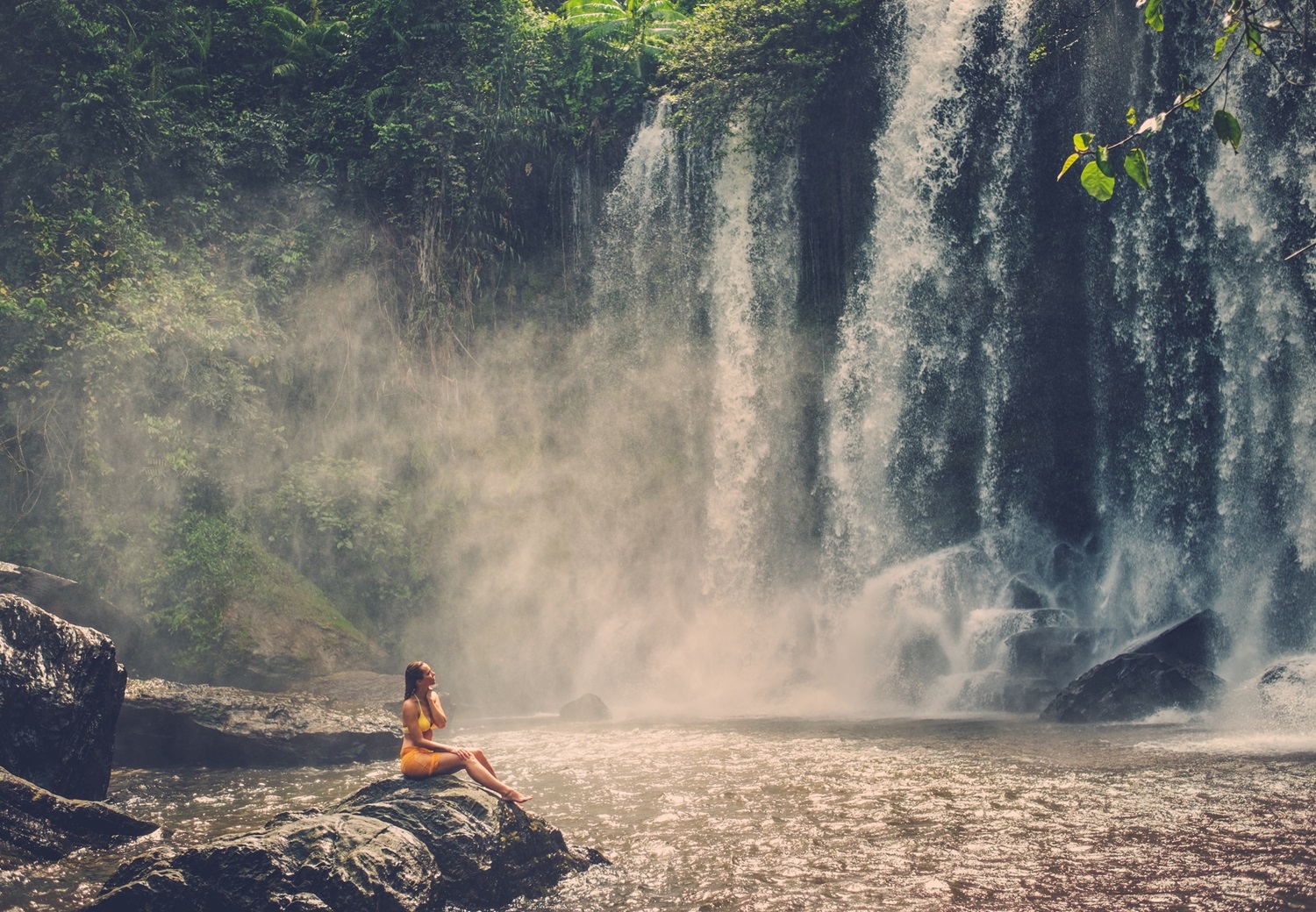
Our tour ends, but we hope that you will return to these parts. Or maybe you are still in the mood to stay and enjoy a seaside holiday in Cambodia. It's not difficult - a few hours on the road, and you're on the beach!
